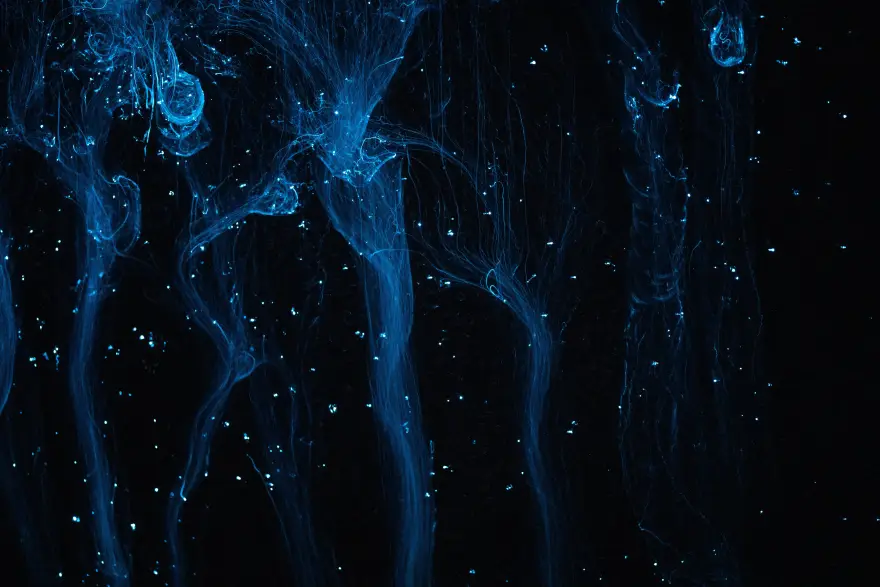Fern Orchestra Creates Ecological Art at the Intersection of Science

Fern Orchestra is an art collective whose performances and productions explore ecological sustainability and out connection with nature through artistic means and scientific insight. Their work blends artistic expression, interdisciplinary collaboration, and ecological perspectives—particularly focusing on the invisible changes occurring in marine ecosystems.
The Fern Orchestra collective invites audiences to reflect on their relationship with nature and to attune themselves to the perspectives of other species.
One example is the Compressed Time project, which is part of the collective’s algae art trajectory. It was created in collaboration with marine scientists. The work utilized a sediment sample from the Baltic Sea to develop a light and sound performance. Scientific data derived from the sample formed the structural basis of the piece, influencing its musical score and visual elements. The data served as a graphic score, enabling the Baltic Sea to “compose” the performance.
The collective is also involved in Åbo Akademi’s MIMOSA research project (Modeling advanced primary production scenarios in coastal seas), which examines how microalgae adapt to climate change. The dialogue between science and art in Fern Orchestra’s work is not presented in a didactic or instructional way but as a sensory experience. This invites the audience to become aware of multispecies perspectives and the ecological state of marine environments.
Ecological sustainability is also embedded in their production choices. Fern Orchestra produces only one performance per year – partly due to resource constraints but also as a conscious decision. Each production uses carefully selected, low-energy technologies, such as pre-defined lighting solutions. In one project, a dance mat was replaced with cellulose paper as the floor material. The paper could be reused by flipping it over during the performance season, and afterward, it was returned to the set workshop for future use. In their practice, ecological constraints are not obstacles but creative limitations that guide production toward sustainability.
For greater impact, collaboration with larger institutions – such as Turku City Theatre and the Regional Dance Centre of Western Finland – has been vital. These partnerships have enabled a broader visibility and they support a sustainable production structure by combining the resources of different actors, such as production and marketing infrastructures and specialised content expertise.
Fern Orchestra does not offer ready-made answers to environmental crises. Instead, it invites audiences to reflect on their relationship with nature and to attune themselves to nonhuman perspectives. Ecological sustainability is not just a theme – it is a structural foundation that shapes both the content and the production methods. Through art, unpleasant environmental problems can be addressed in ways that open up for collective curiosity and everyday agency. Art can offer alternative, activating forms to complement scientific thinking.